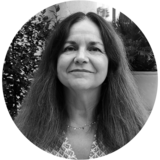Anne Cayuela

2023-2024
MESR fellow
Université Grenoble Alpes
Dancing to the sung poetry of the Golden Age
Biography
Anne Cayuela is professor of Spanish literature of the Golden Age at the UGA Université Grenoble Alpes. She is the author of two monographs Le paratexte au Siècle d’Or, Genève: Droz, 1996 and Alonso Pérez de Montalbán, un librero en el Madrid de los Austrias, Madrid: Calambur, 2005 (Biblioteca Litterae, 6), and has also published a French translation of Jorge de Montemayor’s pastoral novel Les sept livres de Diane (Paris : Champion, 1999). She has published numerous articles on prose fiction and comedy in the 17th century, as well as in the field of the history of written culture, the history of books and reading in the modern period. She edited a collective volume Edición y literatura en España (siglos XVI y XVII), Zaragoza, PUZ, 2012 and co-directed with Christophe Couderc the Hispanic part of the ANR project on the theatrical paratext: “ Les idées du théâtre : France-Italie-Espagne xvie-xviie siècles “. She has also been principal investigator of the “Poetry and music” project of the ILCEA4 laboratory, which has resulted in the publication of several issues of journals: “Traduire la chanson”, La Main de Thôt, 8, 2020; “Chant et nation : de la culture populaire à la culture savante”, Revue ILCEA, 38, 2020; “Chanter les poètes”, ATEM n° 6, 2, 2021. She is currently working on dance and dance in the Golden Age.
Research project
Research project
The poetry that was danced in the Golden Age is a cultural heritage that has been little studied as such. To identify, question and represent this poetry in its kinesic dimension is to give back to verse and rhythm the breath of song and the power of movement. It is to recreate the original power of dance, instead of recreating steps and gestures. In the printed pages of different editions of 17th century theatre books (collections of plays or short genres), silent poetic fragments still contain the musical and danced movements that once accompanied them. This enormous and singular poetic corpus has rarely, as far as we know, been collected or worked on in its sound and kinaesthetic dimension, except for a few scattered attempts, with researchers renouncing the artistic dimension of music and dance as being, most of the time, outside their field of competence. The constitution of a multidisciplinary team bringing together philologists, musicologists and artists of instrumental music, song and dance will not only make it possible to question the contiguity of dance, voice and poetic text typical of the 17th century, but also to give these texts back their corporeality and their original incarnation by imagining what the kinesic and visual effects of these dances were, producing new dances that produce these same effects.
Selected Publications
Selected publications
- 2023. “Los hispanistas franceses manos a la obra“, in Marina Mestre, Philippe Rabaté (dirs.), Serio ludere, Hommage au professeur Jean-Pierre Étienvre, Madrid, Casa de Velázquez.
- 2021. “Mudanzas y censuras: La dama boba de las tablas al pliego“, in Mathilde Albisson (ed.), Los agentes de la censura en la España de los siglos XVI y XVII, Berna, Peter Lang, pp. 341-365.
- 2019. “De las tardes a las noches: el placer de la lectura musicada en las novelas de Castillo Solórzano“, Castillo Solórzano novelador, Criticón, 36, Presses universitaires du Mirail, pp.157-173.
- 2005. Alonso Pérez de Montalbán: un librero en el Madrid de los Austrias, Madrid, Calambur, (Biblioteca Litterae, 6).






